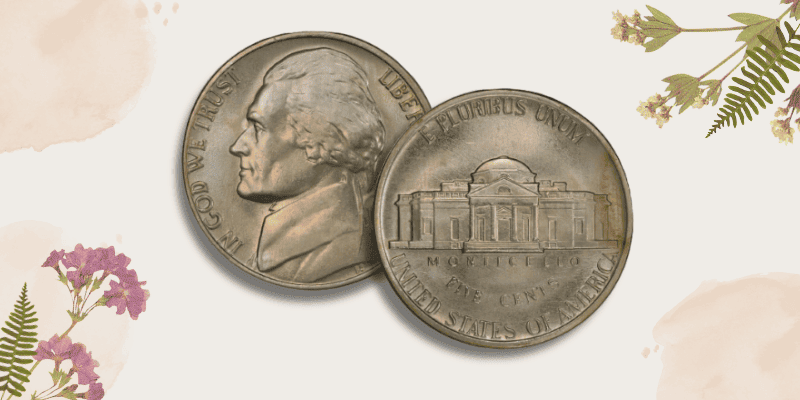Discovering Hidden Treasures: My Personal Numismatic Adventure
Let me take you on a remarkable journey through the world of coin collecting, where every nickel tells a story, and the 1979 Jefferson Nickel holds secrets waiting to be uncovered. As a seasoned collector with decades of experience, I‘ve learned that coins are more than mere currency—they‘re historical artifacts that capture moments in time.
The Birth of a Passion
My fascination with coins began in my grandfather‘s study, surrounded by wooden display cases and the soft gleam of carefully preserved metallic treasures. He would carefully remove a coin, turning it in the light, explaining how each scratch, each minute detail represented a fragment of American history.
The 1979 Jefferson Nickel emerged during a fascinating period of technological and economic transition. That year, the United States was experiencing significant cultural and economic shifts. Jimmy Carter was president, disco was fading, and the economy was navigating complex challenges. Against this backdrop, the U.S. Mint continued its steady production of coins that would become tomorrow‘s collectibles.
The Minting Process: A Symphony of Precision
Imagine the intricate dance of machinery at the Philadelphia, Denver, and San Francisco mints. Each nickel represents a marvel of engineering and human skill. The 1979 production run was substantial—463,188,000 coins from Philadelphia alone—yet each coin was a unique creation.
The minting process in 1979 was a blend of mechanical precision and human expertise. Massive hydraulic presses would transform copper-nickel alloy blanks into perfectly formed coins. Skilled workers monitored every stage, ensuring each nickel met exacting standards.
Decoding the 1979 Nickel‘s Unique Characteristics
What makes the 1979 nickel truly special? Let‘s dive deeper than surface-level statistics.
Metallurgical Composition
The coin‘s composition—75% copper and 25% nickel—wasn‘t arbitrary. This specific alloy was chosen for durability, resistance to corrosion, and economic feasibility. Each nickel represented a carefully calculated balance of metallurgical science and practical economics.
Design Nuances
Felix Schlag‘s original Jefferson design, implemented in 1938, remained largely unchanged in 1979. The obverse still featured Thomas Jefferson‘s profile, facing left, with "LIBERTY" and the year prominently displayed. The reverse continued to showcase Monticello, Jefferson‘s historic home, with "FIVE CENTS" elegantly positioned.
The Economic Landscape of 1979
To truly appreciate the 1979 nickel, we must understand its economic context. Inflation was running high, energy crises were reshaping industrial landscapes, and the value of currency was constantly in flux.
A nickel in 1979 wasn‘t just five cents—it represented purchasing power, economic stability, and national identity. Collectors understand that numismatic value transcends face value.
Mint Mark Mysteries
Mint marks tell fascinating stories. The 1979-D (Denver) and 1979 (Philadelphia) nickels offer different collecting experiences:
- Philadelphia nickels (no mint mark) were most common
- Denver mint produced 325,867,672 coins
- San Francisco created proof sets for collectors
Rarity and Valuation: The Collector‘s Calculus
Not all 1979 nickels are created equal. Certain specimens can command extraordinary prices based on:
- Mint condition
- Striking errors
- Unique characteristics
- Preservation quality
A pristine 1979-D MS67 Full Steps nickel could fetch thousands of dollars—a testament to the nuanced world of coin collecting.
Error Coins: Numismatic Lottery Tickets
Some of the most valuable 1979 nickels emerged from minting errors. Imagine a coin struck off-center, or accidentally produced on a different planchet. These "mistakes" can transform an ordinary five-cent piece into a collector‘s dream worth thousands.
Preservation: The Collector‘s Sacred Duty
Preserving coins isn‘t just about maintaining value—it‘s about protecting historical artifacts. Proper storage involves:
- Avoiding direct handling
- Using archival-quality holders
- Controlling temperature and humidity
- Protecting from environmental contaminants
The Emotional Connection
Beyond economics and technical details, coin collecting represents a profound human connection to history. Each nickel carries stories of its journey—from mint to pocket, from transaction to collection.
Conclusion: More Than Just Currency
The 1979 nickel represents more than metal and monetary value. It‘s a snapshot of American life, a tiny time capsule waiting to share its secrets with those patient and passionate enough to listen.
For the true collector, every coin is a universe of stories, waiting to be explored.
